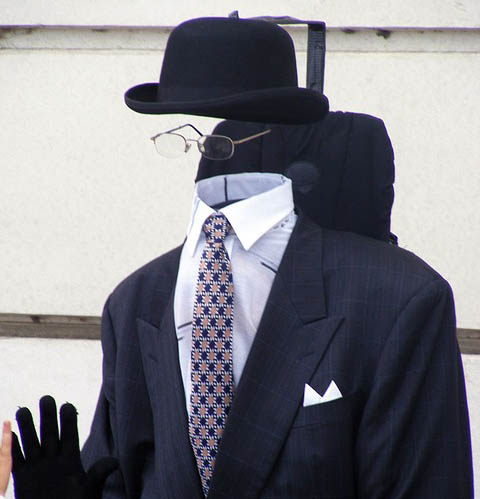It looks like a coat, but has the power to grant invisibility.
A new invisibility cloak is being developed by a team led by director of Berkeley Lab’s Materials Sciences Division, Xiang Zhang.
When wrapped around a person or an object, the cloak manipulates the surrounding light to inhibit its view from the naked eye. Light still bounces off the object, but it doesn’t reveal its location.
“This is the first time a 3D object of arbitrary shape has been cloaked from visible light,” said Zhang.
This is the first time a 3D object of arbitrary shape has been cloaked from visible light
The researchers, whose findings were published in the journal Science, note that prior attempts to develop cloaking technology have been “bulky” — making it challenging to scale up for use with bigger objects. Prior attempts to create the technology have also introduced “unnecessary phase shifts in the reflected light, making the cloaks detectable.”
(Previous) cloaks have thus far used volumetric distribution of the material properties to gradually bend light and thereby obscure the cloaked region. Hence, they are bulky and hard to scale up and, more critically, typical carpet cloaks introduce unnecessary phase shifts in the reflected light, making the cloaks detectable.
RT reports that the new cloak will tune itself to match its background using gold nanoantennas to scatter light, giving “the illusion of invisibility.” RT notes, however, that the cloak is not designed to maintain invisibility while moving, thus its wearer must remain stationary to achieve the intended effect.
An associate professor of electrical engineering at the University of Texas at Austin, Andrea Alù, told Live Science that a successful test on a small object is not indicative of its potential application on larger objects. “They had a small object, a little bump,” he said.
Alù, who has researched cloaking systems, continued stating that “with a larger object, I can’t take advantage of that … when I illuminate it, a portion is not illuminated; it’s in shadow.”
Zeno Gaburro, a physicist at the University of Trento in Italy, commented on another problem: that while “invisible,” the object still projects a shadow.
Still, the camouflage technology is being hailed by many as cutting-edge, and Zhang is confident the concepts being developed can eventually be applied to other things as well, such as the projected displays used in movie theaters. Movie theaters are projected onto flat screens currently, though with this technology, projections could be made onto a surface of any shape without being distorted or losing picture quality.
























